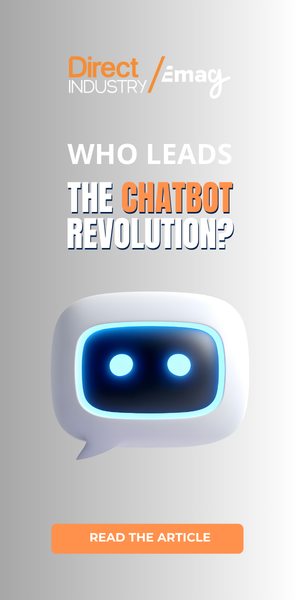AI is redefining global influence, and Europe stands at a crossroads: follow American platforms, fear Chinese dominance, or build its own path. A new step was taken Tuesday in Berlin, where France and Germany unveiled a strategic partnership with Mistral AI and SAP to develop sovereign cloud and AI tools for the public sector. But is this enough to stop Europe from sliding into digital dependency—and to convince European companies that real alternatives exist?
In a hurry? Here are the key notes to know:
- Europe at risk of digital dependency: Many European companies today rely almost entirely on US cloud, software and AI platforms, creating a strategic vulnerability for data, competitiveness and autonomy.
- Risks of relying on foreign AI: economic, security and cultural: Dependence creates high costs, vendor lock-in, exposure to foreign laws, and software/model biases that may not reflect European values or needs.
- Sovereign European AI as a strategic lever: Europe’s strengths — industrial data, R&D capacity, cloud providers, regulation — offer a chance to build “sovereign AI”: local infrastructure, data control and AI tools adapted to European regulations, reducing risks while preserving innovation and competitiveness.
At the AIM Summit in Marseille we went to last week, several roundtables and keynote talks focused on these major issues. If a third way is necessary but currently difficult to build, new initiatives are emerging to offer alternative forms of AI more aligned with European values. Some believe there is no technological fate and that we can find alternatives to American solutions, particularly in sensitive sectors such as healthcare or defense.
This was precisely the ambition behind Tuesday evening’s announcement during a Franco-German summit in Berlin. The French and German governments unveiled a public–private partnership with Mistral AI and SAP SE to equip the public sector of the two countries with a sovereign cloud and sovereign AI tools. A strategic initiative to strengthen Europe’s digital sovereignty, and deploy native AI solutions that improve the efficiency, transparency, and responsiveness of public services.
So what cards can Europe play in the AI race? Is there a real market for sovereign offerings for European businesses? And does Europe have the capacity to deliver sovereign AI solutions?
Read also
Europe’s Digital Dependence: An Economic, Industrial, and Cultural Risk
At the AIM Summit, the concern was palpable: how can Europe avoid missing the AI train, just as it missed the internet in the early 2000s, then social networks a few years later? Or, worse, repeating the failed Qwant episode—the French search engine that never managed to replace Google.
And indeed, for AI, things already look shaky. The data is revealing: Europe is facing the risk of yet another major technological dependency.
A Massive and Growing Dependence
The diagnosis is clear: in cloud, software, and generative AI—just as with the internet and social networks—European companies overwhelmingly rely on American tools.
According to a report by CIGREF (the IT Club of France’s Largest Enterprises) published last April, the cost of digital dependence is estimated at €265 billion per year, reflecting a massive transfer of wealth to mostly the U.S. For comparison, reminds David Djaïz, Partner and Managing Director at Ascend Partners:
“Europe’s energy dependence amounts to roughly €300 billion of hydrocarbons purchased every year from the rest of the world, particularly from Gulf countries and the United States through LNG. And that is already the subject of major policy efforts in Brussels to gradually reduce our reliance on fossil fuels.”
France’s Minister for AI, Anne Le Hénanff, puts it bluntly:
“We are already a digital colony of the United States. Eighty percent of software purchases in Europe come from the U.S.”
Today, only 17% of cloud or software solutions used by European companies are European. And according to an Accenture study published in early November, 30% of corporate data is highly sensitive and should rely on sovereign solutions.
Yet sovereign European alternatives are struggling to emerge. As the French minister notes, among the 100 most influential AI models today, only 6 are neither American nor Chinese.
Read also
The “Voluntary Servitude” of Businesses
Why such dependence? Many experts argue that European companies underestimate digital dependency when choosing tools or software. Why? Because of what David Djaïz calls voluntary servitude:
“The digital dependence of our companies is a 40-year story, starting with the early waves of innovation from the United States—the large IBM computers, the AS/400 systems still running in some banks and insurance companies. And for 40 years, this dependence on a handful of actors has only grown.”
Over four decades, every layer of the digital stack (infrastructure → platform → applications) has gradually become American: mainframes, software, cloud, and now generative AI.
For Florian Douetteau, CEO of Dataiku—a French-born startup now headquartered in New York—buyers’ psychology is also decisive:
“When I started my company, I realized I would never benefit from any French or European preference when selling software. Why? Because in the psyche of buyers—yes, even in Europe—the kind of software they want is American. For the same reason that when I buy a car, I’m reassured if it looks German, and when I buy wine, I’ll always choose French wine. It’s just how people think.”
European companies have ended up treating digital tools as interchangeable commodities, even though these technologies now underpin most of the value created by businesses. As David Djaïz warns:
“Digital isn’t a commodity. It’s not something you pick off a shelf. It is a strategic asset. And in the years ahead, in the new industrial revolution driven by AI, it will become the core of value creation—not just for tech-native companies, but across all sectors, from transport to agriculture, industry, and healthcare.”
To fully capture the value chain, he argues, large companies must deliberately shift away from entrenched dependencies. Besides, the risks are too high.
Read also
The Risks: Competitiveness, Security, and Cultural Homogenization
Indeed, experts identify four major risks associated with Europe’s digital dependency:
Economic Risks
Costs are exploding. One widely discussed example is Broadcom’s acquisition of VMware, followed by price increases of 800% to 1500%.
Djaïz warns:
“Some companies have cloud bills amounting to several hundred million euros. A company that is fully dependent today sees its costs explode with external providers. It’s losing money.”
This creates a risk for these companies’ competitiveness, for their strategic autonomy, and for their bargaining power. And in the long run, it will affect the entire European ecosystem.
Technological Lock-In
American solutions increasingly adopt a full-stack approach. A company that chooses Amazon Web Services often ends up adopting most of the AWS ecosystem—and becomes locked in.
Security Risks
The U.S. CLOUD Act allows American authorities to access data stored abroad by American companies—an issue for sensitive sectors such as defense and healthcare. Security concerns are amplified by past scandals such as Pegasus spyware.
Cultural Risks
American and Chinese AIs are trained on norms, values, and content that do not reflect European models or societies. As a result, they may be poorly suited to European needs.
Toward the Emergence of a European Third Way?
Despite the dependencies and associated risks, public and economic demand for a third way is rising.
A Call from Citizens and the Tech Ecosystem
A survey by FGS Global shows that more than 80% of European citizens consider technological sovereignty important or very important. Geopolitical tensions only reinforce this awareness—especially after the forceful speech delivered by U.S. Vice President JD Vance at the Munich Security Conference last February.
For Florian Douetteau of Dataiku, between the American ecosystem and the Chinese ecosystem, Europe must carve out a distinctive digital path:
“There is room for a third digital way, with actors who serve their clients without bundling everything together, who rely on heterogeneous technologies. Europe can embody that. And even beyond Europe—think about the Middle East. We need to get out of our bubble. That’s a form of freedom businesses need.”
But can Europe actually offer sovereign solutions? To reduce our dependency, what are the continent’s underestimated strengths?
A Key Advantage: Data
One of Europe’s major strengths, compared with the U.S., is that it generates enormous volumes of industrial, commercial, and medical data—often better structured and better regulated than elsewhere. Regaining ownership over this data would be a powerful lever for reducing dependency on American platforms, explains David Djaïz:
“If a company starts identifying its most sensitive data, it can isolate it and store it on a sovereign or private cloud. Then, step by step, it can build a strategy to leverage its own digital assets—and maybe even sell them to other companies in the future.”
For businesses, the real issue is no longer just using AI—it’s regaining control over their digital assets.
Jean-Noël de Galzain, President of Hexatrust, the association of French and European champions in cybersecurity and trusted cloud services, stresses that building AI with our own data, languages, and societal norms opens the door to culturally European AI—adapted to healthcare, industry, regulations, and SMEs.
To achieve this, he argues, Europe must invest heavily in innovation. And on that front, the continent has more strengths than it often acknowledges.
Strong Innovation Capacity
Indeed, innovators are not lacking in Europe. The continent already excels in quantum computing, cybersecurity, robotics, and AI research.
Among the standout AI players are Mistral AI and Aleph Alpha. In several media interviews, Mistral CEO Arthur Mensch emphasizes that one of the company’s key advantages for European organizations is data sovereignty—a competitive differentiator.
New actors are also emerging and making noise, such as H Company or Prisme.ai. The latter is developing an agentic platform, and its CEO, Wafaâ AMAL, proudly highlights their complete technological independence:
“There is no black box, unlike what we see with Big Tech, where you have no visibility into the workflow—how, when, or why something happens. We have an ethical audit trail. You can see all activity, and if something goes wrong, you can immediately locate the issue.”
For these companies, sovereignty is especially strategic as they aim to deploy their AI platforms to large enterprises.
On the scientific side, Europe hosts some of the world’s leading AI research institutions, such as IMEC in Belgium and CEA-LETI in Grenoble.
In electronics and semiconductors, Europe also has global champions: Germany’s Infineon, France’s STMicroelectronics, and the Netherlands’ ASML. Former French finance minister Bruno Le Maire, now a special adviser to ASML, proudly notes:
“ASML builds the world’s most advanced lithography machines, using deep ultraviolet to etch silicon wafers down to 2 nanometers—that’s 100,000 times thinner than a human hair. It’s unique in the world, and probably Europe’s greatest technological asset today. These extraordinary machines are built in Eindhoven and shipped to China, Taiwan, and the U.S.—unfortunately not in Europe, because we don’t yet manufacture chips at this scale. But the technology is uniquely ours.”
Even in the cloud sector, a new generation of European providers is emerging—such as OVHcloud or Scaleway—even if they remain modest in size compared with U.S. giants.
These are Europe’s strengths. Now the key question becomes: how can European businesses actually act on these strengths and choose European solutions?
Read also
What Levers Can Reduce Europe’s Digital Dependence? The Role of Businesses Themselves
Unlike states, businesses do not have a mission of sovereignty. Their primary responsibility is growth and competitiveness. But they also have an imperative: to control their digital strategy. As seen earlier, excessive dependency exposes them to major risks.
Measuring Dependence: The Resilience Index
David Djaïz proposes a tool inspired by the carbon footprint model: the Resilience Index. This is intended to map a company’s digital dependence and help leaders balance sovereignty, risk, cost, and performance:
“It’s an open standard, similar to IFRS accounting standards or the carbon footprint for measuring greenhouse gas emissions. We give company leaders the means to measure their digital assets and dependencies—not to wall themselves off and only buy European or French services, because that’s not feasible—but to identify areas of high dependence and find credible alternatives. For sensitive data, for instance, they could prefer to store it on a European or private cloud because it’s too sensitive.”
The goal isn’t autarky—it’s strategic control. With this map, leaders can make informed choices about alternatives, mitigating risks without compromising operational capacity.
Diversifying Suppliers: An Investment, Not an Extra Cost
To double sovereign digital purchases in Europe—from 17% today to 30%—public procurement alone won’t suffice, as it only represents 3–4% of the market.
According to Galzain, the bulk of the effort must come from private enterprises, which can redirect part of their IT spending toward European technologies, particularly for sensitive data. They must also “unbundle” from dominant ecosystems.
“Shifting just 15% of our digital purchases to European solutions would inject €700 billion into the European ecosystem over ten years.”
In other words, digital sovereignty will not happen by decree; it will result from companies’ own purchasing decisions. This is the responsibility of entrepreneurs:
“When choosing infrastructure, launching a startup with a new service, or buying a digital product, maximize the use of European cloud, cybersecurity, and AI solutions.”
Investing in European Solutions Is Vital
Djaïz stresses that this isn’t just about patriotism—it’s strategic freedom:
“It must also be done because it’s the only way to remain free. Tomorrow, wealth creation in companies will rely on digital technologies, and this is the only way to remain competitive. Today, we might think buying European or diversifying is an extra cost. No—it’s an investment that will create value in the future, and that’s crucial.”
The Role of States and the European Union
While companies must drive the adoption of a European path, states have a role in regulatory frameworks that enable investment.
A Regulatory Framework that Lays the Foundation
Europe has already set the stage with a regulated digital model:
- GDPR for data protection
- NIS2 / DORA for cybersecurity resilience, covering 150,000 critical or important organizations across Europe
- AI Act for AI governance
- Cloud Sovereignty Framework for evaluating the technical and legal sovereignty of offerings
Read also
Toward a European Preference?
Galzain pushes further, advocating for European preference clauses in NIS2 and DORA transpositions to encourage buying European. The French Minister for AI supports this, without advocating autarky.:
“Americans and Chinese heavily support their own ecosystems. We need to help our own ecosystem as much as possible. We must introduce an element of European preference.”
The ecosystem itself must grow in capacity: Europe will not replace Amazon or Microsoft overnight. The catch-up will be gradual. The French minister of AI notes:
“When you look at China, which began developing technological sovereignty plans more than 10 years ago, they now have Alibaba Cloud, Tencent Cloud—players that are extremely powerful in AI. The Americans would have loved to race alone, but the Chinese are really strong in AI model development.”
Europe must also overcome internal differences: the market is not yet unified, and definitions vary. For example, Amazon is considered a sovereign cloud in Germany, but not in France. Aligning these definitions is critical.
PPP Paris-Berlin – Mistral-SAP
The AIM summit in Marseille took place before the Franco-German summit in Berlin. Discussions had tempered expectations, as the goal was to foster European champions in a market dominated by U.S. tech giants.
Tuesday evening, a joint communiqué from Bercy (French minister of Economy) and the German Minister for Digital Transformation announced a strategic public-private partnership between France and Germany with Mistral AI and SAP SE, aiming to deploy native AI solutions to enhance public service efficiency, transparency, and responsiveness.
The initiative has four pillars:
- Creating a sovereign ERP integrating AI
- Automating critical financial processes
- Developing digital agents to assist public servants and citizens
- Implementing shared training and innovation capacities to ensure applicability and traceability of AI systems
This could be a powerful signal, as Galzain noted before the PPP was officially announced:
“For companies to shift their purchases toward European solutions, we need to send a clear signal by example. Start with public procurement in France and Germany to support European tech growth. This changes the dependency dynamics and encourages other European countries to follow.”
For the experts, missing the AI train would be a historic error from which Europe might not recover. The continent has the talent, data, labs, globally respected regulation, and a human-centered digital vision.
But every company, through its choices of cloud, AI, and digital architecture, ultimately shapes whether Europe will be a technological player or merely a captive market.










![Image [Buying Guide] How to Choose the Right Protection Gloves?](/wp-content/uploads/sites/3/Gloves-1-320x213.jpg)